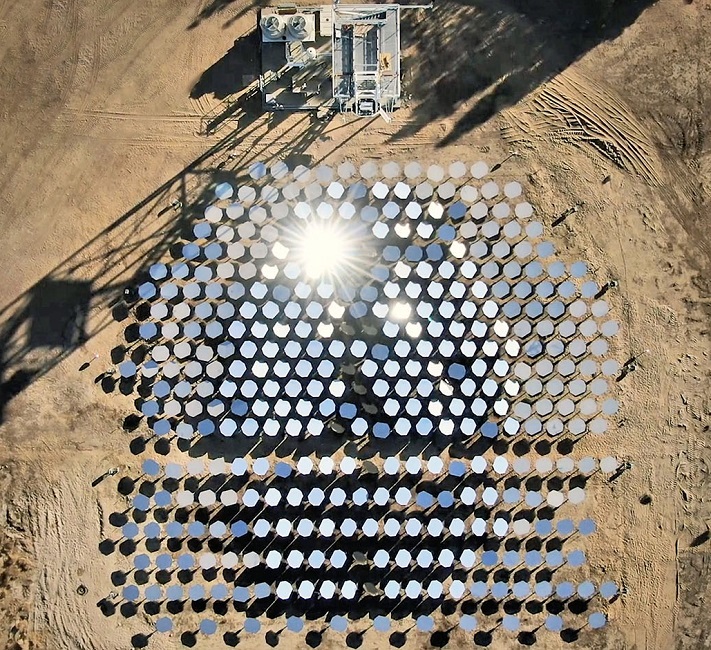US to build 5 MW sCO2 CSP plant; Spain backs global tower insulation standards
Our pick of the latest solar thermal news you need to know.

Related Articles
Heliogen wins US funding for high-temperature CSP plant
The US Department of Energy (DOE) has awarded concentrated solar developer Heliogen $39 million to build and operate a 5 MW CSP plant with supercritical CO2 (sCO2) power cycle and thermal energy storage. Heliogen will commit $31.1 million to the project, the DOE announced November 12.
The project will include a newly-built heliostat field and act as a demonstration plant for the integrated sCO2 power cycle and storage system. The plant will limit the turbine inlet temperature to 600° C in order to use widely-available stainless steel alloys.
"This project will generate real operational data of a thermal energy storage-driven sCO2 power cycle, to enable commercial adoption of this novel technology," the DOE said.
Californian start-up Heliogen has developed an autonomous heliostat system that uses cameras and advanced computer vision software to align heliostats more accurately and increase solar efficiency. Tests have shown the increased accuracy can achieve temperatures exceeding 1,000 degrees C, the company said in November 2019.
A number of global research teams are developing new high-temperature CSP designs to increase energy conversion efficiency and reduce costs.
Commercial CSP tower plants use molten salts as the heat transfer medium (HTM), which limits operational temperatures to 565 degrees C.
Last year, engineers at General Electric (GE) and the Southwest Research Institute (SWRI) completed testing of the world's highest temperature SCO2 turbine.
Operating at around 700 degrees C, the 10 MW turbine yielded a thermal efficiency of almost 50%, far higher than the 35 to 40% achieved by conventional CSP systems.
Spain backs minimum thermal insulation standards for tower plants
The Spanish Union of Standardisation (UNE) has approved the creation of an international standard for thermal insulation in CSP towers proposed by heat shield group Refractaris.
The next step would be the formation of a working group under International Electrotechnical Commission (IEC) procedures, including members from the U.S., China, Germany and Spain, Refractaris said November 12.
Spanish group Refractaris has designed and installed protection shields for 90% of the world's CSP towers, including the 950 MW Noor Energy 1 CSP-PV plant in Dubai, the 110 MW Cerro Dominador project in Chile and the 50 MW Luneng Haixi project in China.
CSP development has slowed in recent years as PV and battery costs have continued to fall. However, CSP developers believe the demand of CSP plants with storage will rise as larger amounts of intermittent PV and wind capacity come online.
A global minimum standard for thermal insulation would strengthen development possibilities in the coming years, Refractaris said.
Developed by Saudi Arabia's ACWA Power, the $4.4 billion Noor Energy 1 project will be the world's largest CSP plant and includes a 100 MW CSP tower plant, three 200 MW parabolic trough CSP systems, 250 MW of PV capacity and 15 hours of molten salt CSP storage capacity.
Shanghai Electric is the contracted Engineering, Procurement and Construction (EPC) supplier and the project will include technologies from a wide range of European and U.S. suppliers.
The first parabolic trough section is due to start commercial operation in August 2021, followed by the CSP tower plant in November 2021. The second and third parabolic trough sections are due online by April 2022 and December 2022.
Reuters Events
